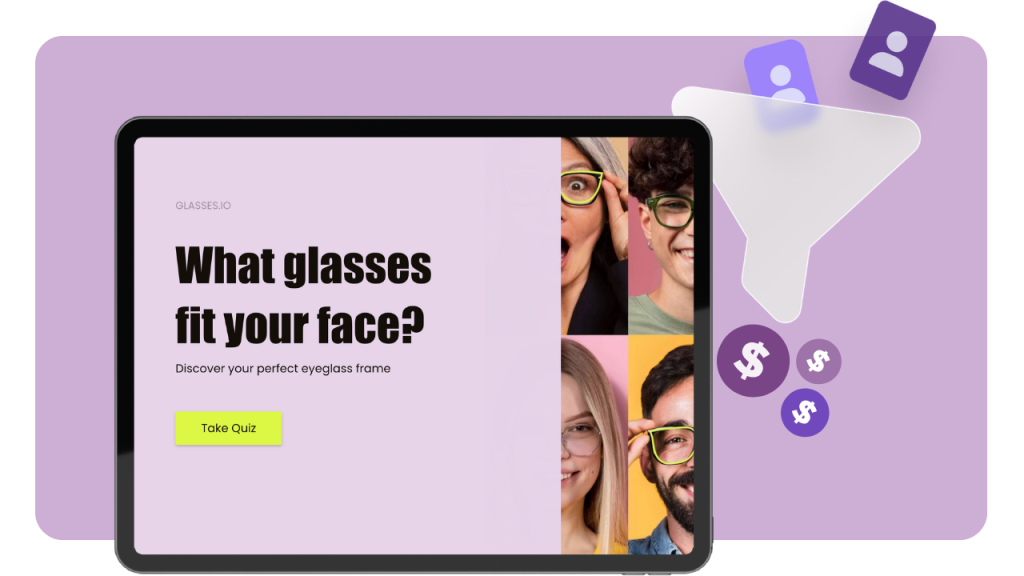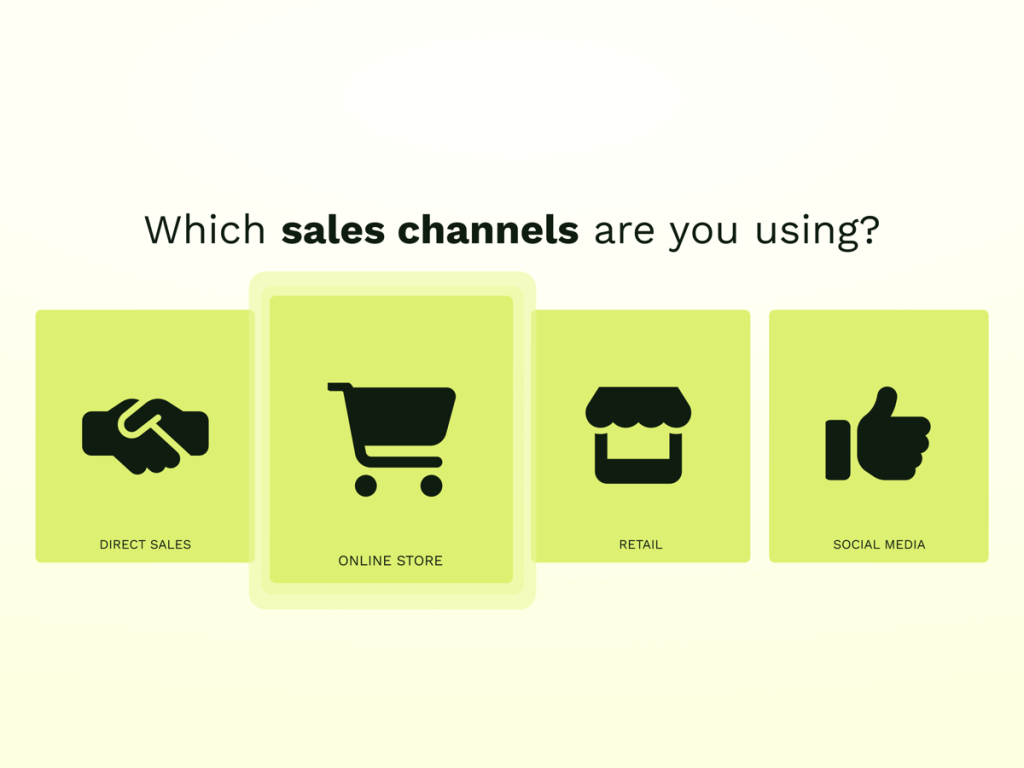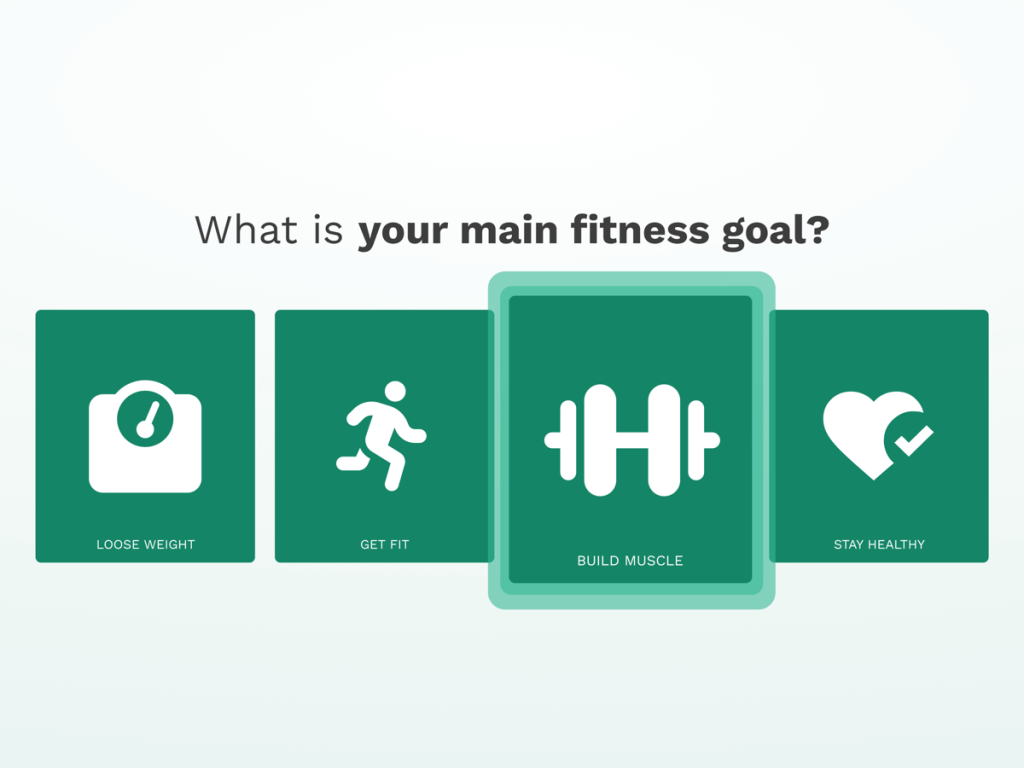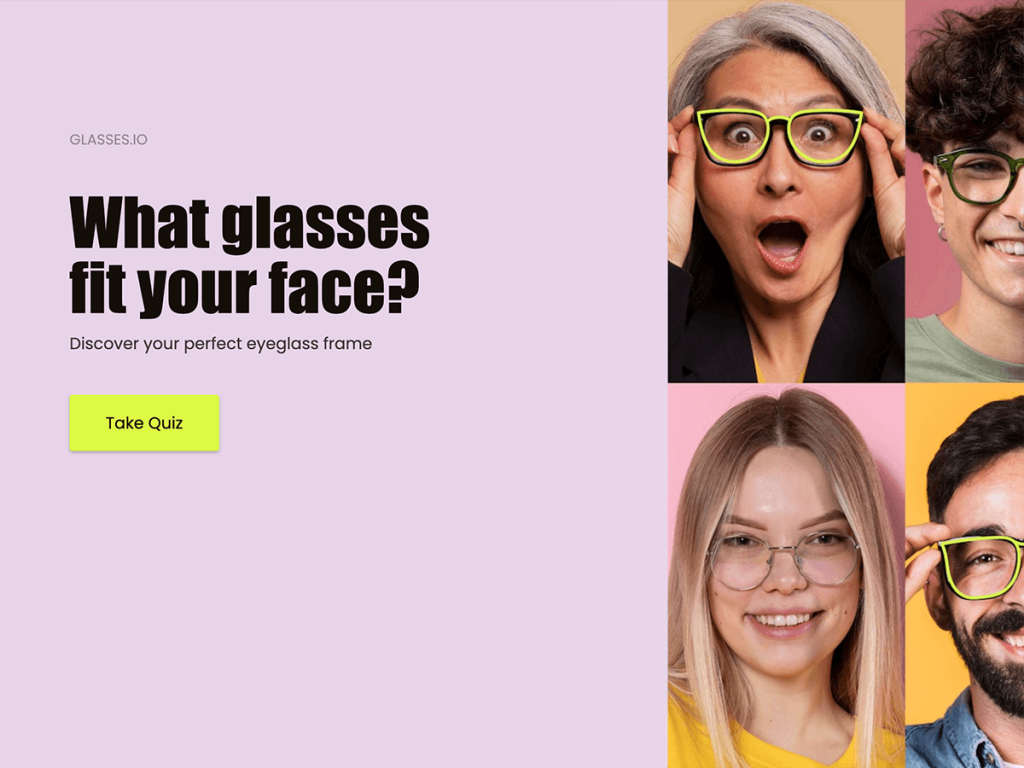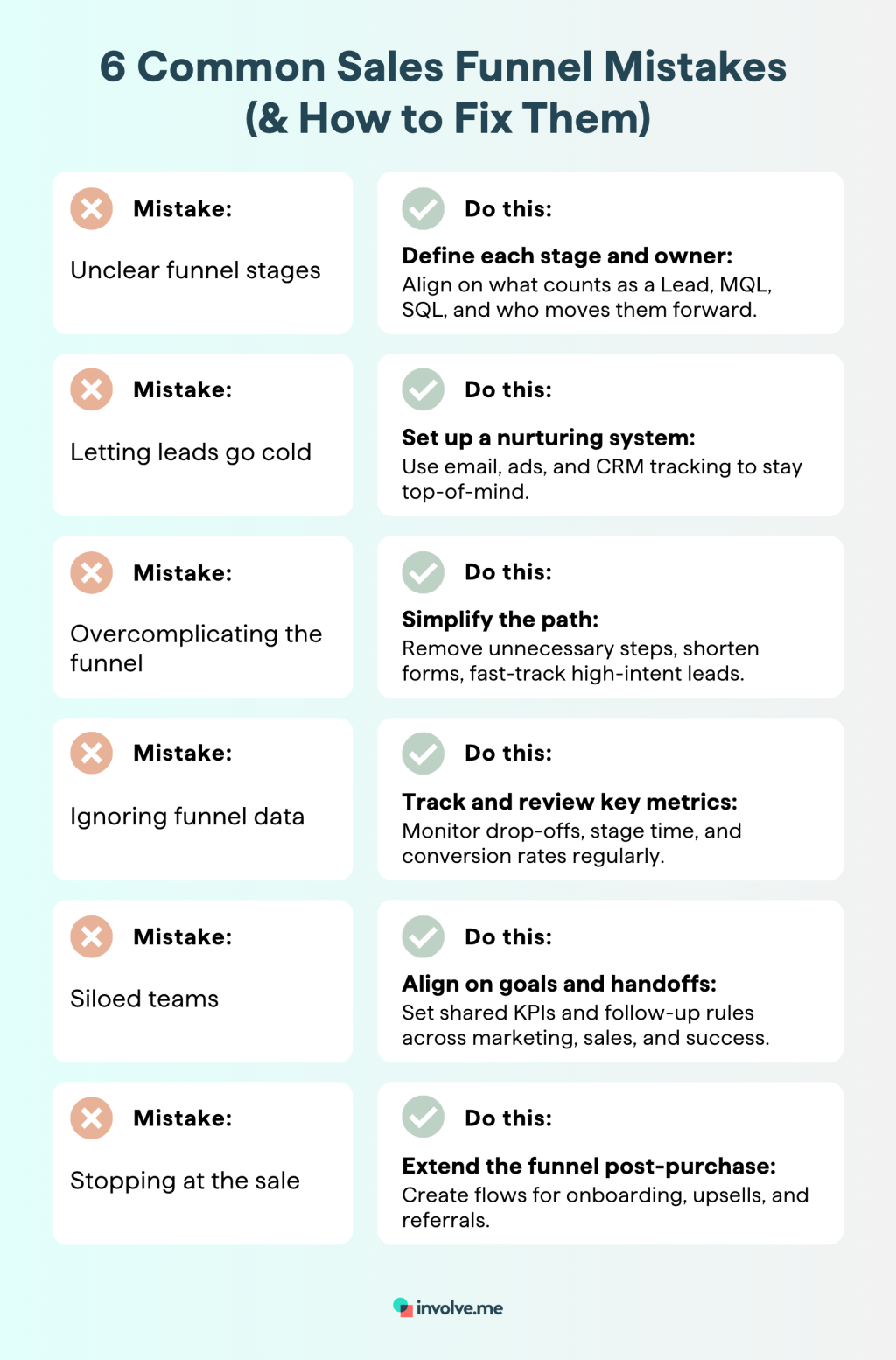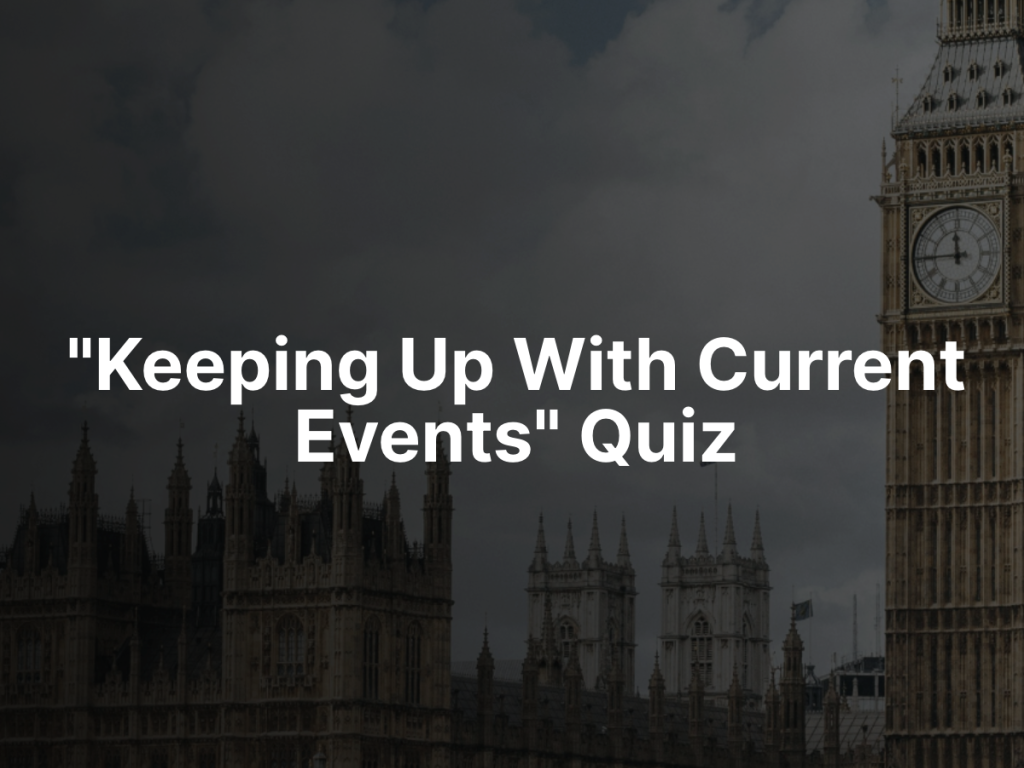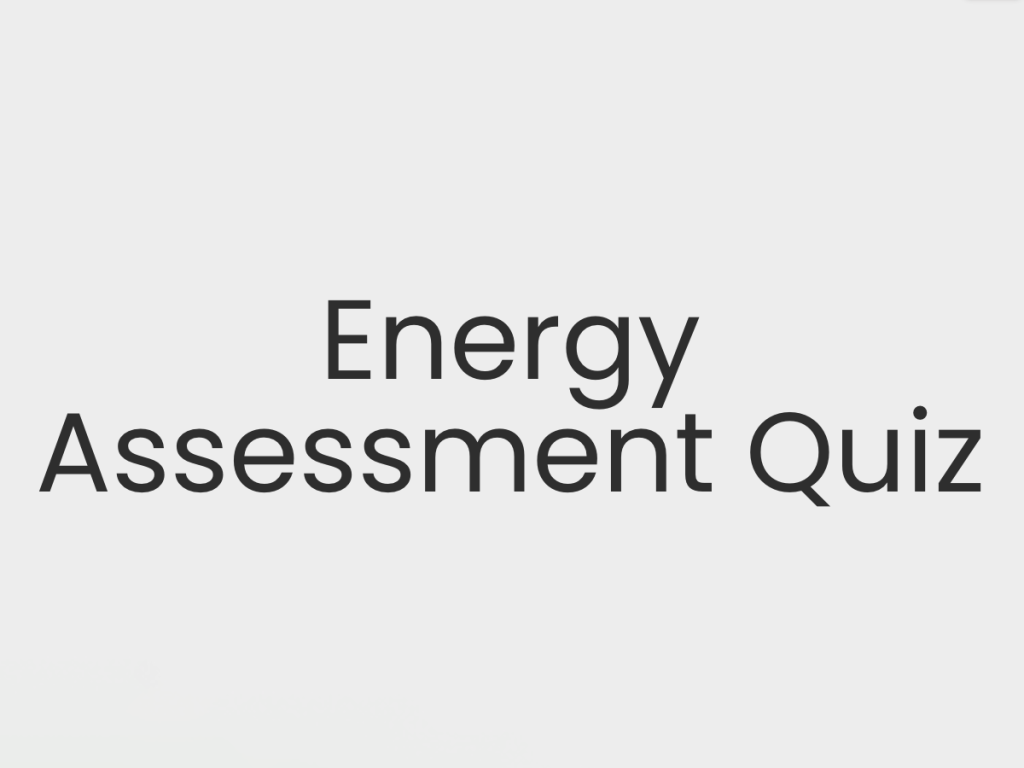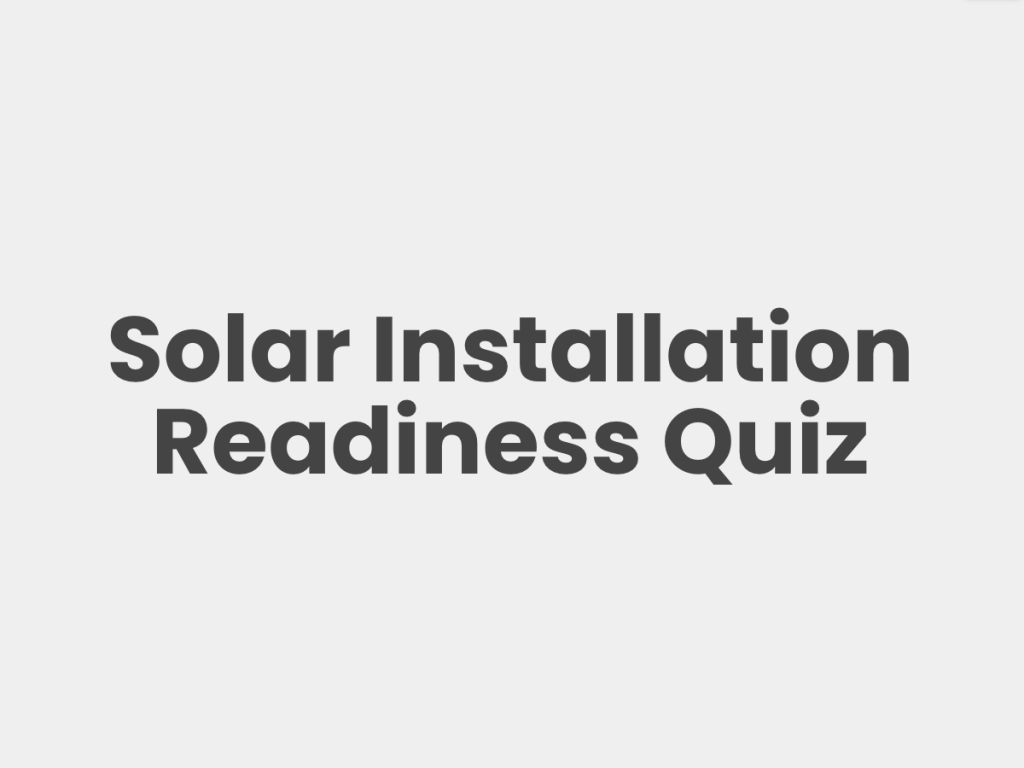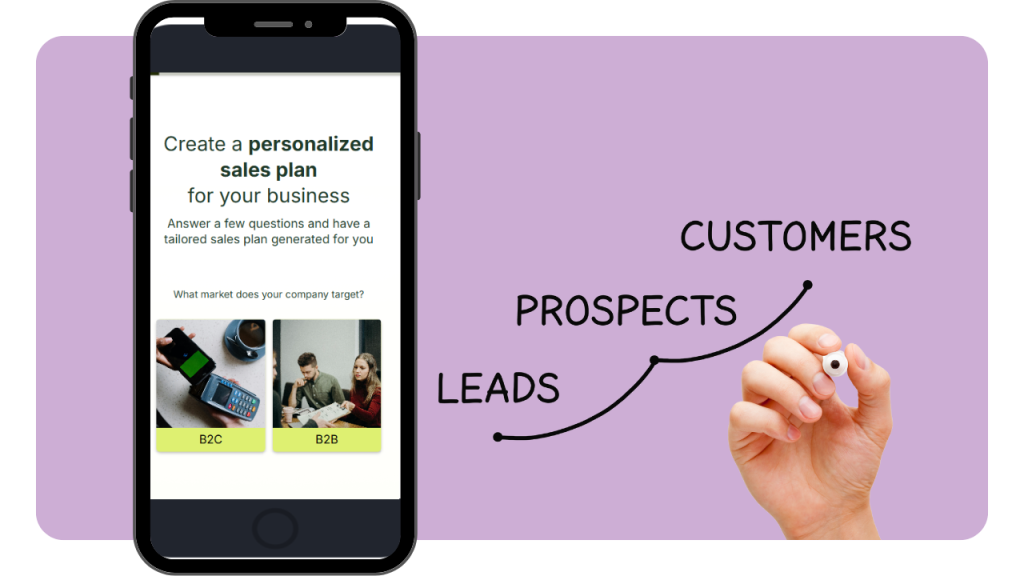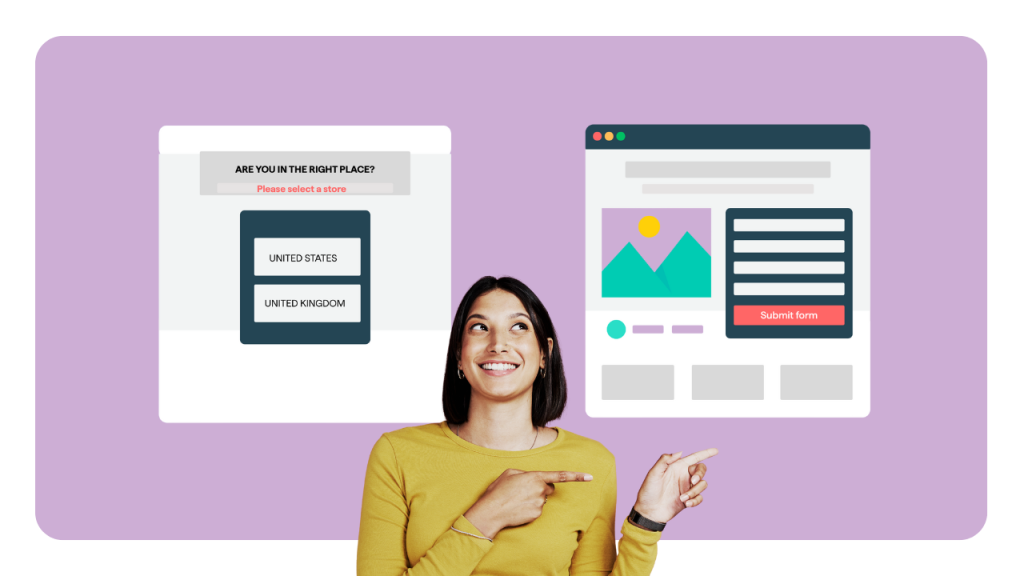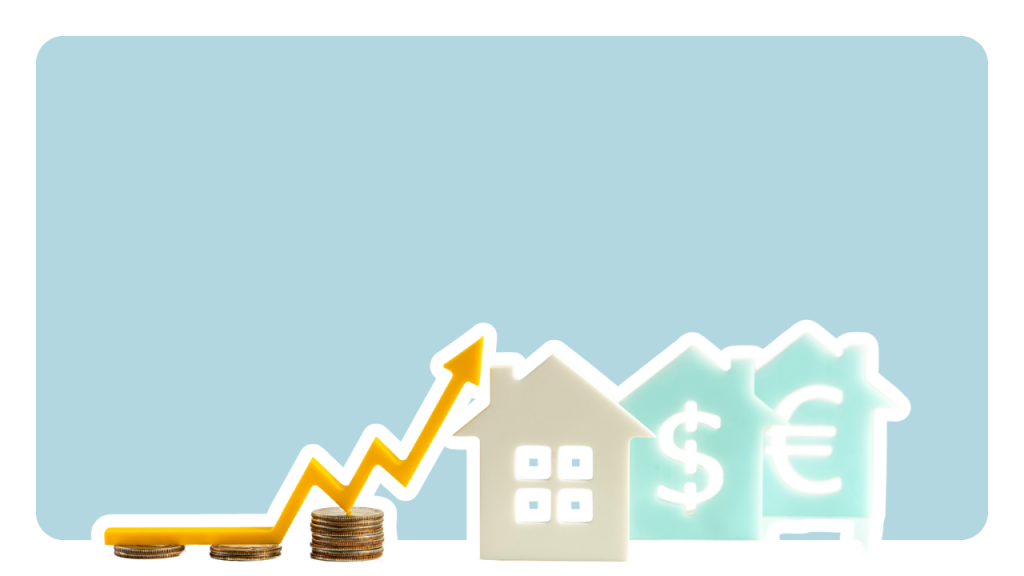If you’re in SaaS, you can’t afford to treat your sales funnel as an afterthought, especially when optimizing your overall sales process.
Your funnel is the map. It shows how someone goes from “just browsing” to “take my money.”
And without that map? You’re flying blind.
Here’s the deal: a sales funnel process (sometimes called a customer journey funnel) outlines the steps your leads take on their way to becoming customers. Picture it like an actual funnel: wide at the top, narrow at the bottom. Tons of people show up, but only a small percentage become paying customers.
The classic version is simple. But today’s buyers? They’re not robots. They zigzag, compare options, scroll past your demo CTA, then come back a week later after a LinkedIn post caught their eye. That’s why modern funnels are more flexible. They’re not just linear checklists, they’re dynamic, multi-touch journeys that reflect real-world behavior.
And if you’ve heard of HubSpot’s flywheel, you know there’s a new take: instead of focusing only on the path to purchase, it keeps the customer at the center, spinning your marketing, sales, and support efforts around them to drive momentum through referrals and retention.
This guide will break it all down:
What a sales funnel really is (no fluff)
Why it matters, especially for SaaS
How the old-school funnel compares to newer models like the flywheel
Step-by-step instructions to create a sales funnel
Where most businesses screw up, and how to fix it
Which metrics actually matter
Real company examples of successful funnels
And the trends you need to know heading into 2025
Yes, this guide is long. But by the end, you won’t just “know about funnels.” You’ll have a clear path to build one that actually works.
Let’s get into it.
What is a Sales Funnel?
Think of a sales funnel process like a roadmap that outlines the buying process. It shows how people move from initial awareness ("I just found your product") to the final action of purchasing ("I'm ready to buy"), and beyond. At the top of the funnel, you’ve got a crowd of potential buyers. By the time you get to the bottom, only a slice of that group is still with you.
So why use the word "funnel"?
Because it mirrors reality. You might have 1,000 visitors check out your website this month, but maybe only 100 sign up for your free trial, and just 10 end up as paying customers. Hence the funnel shape: wide at the top, narrow at the bottom. The funnel helps you track what’s happening at each of those steps.
Let’s break it down:
A basic funnel has four stages, known as AIDA:
Awareness stage: when someone first discovers you exist
Interest stage: they start paying closer attention
Desire stage: they want what you offer
Action stage: they buy
At each stage, the number of prospects gets smaller, but their level of interest grows. That’s the core idea.
Now here’s the kicker: your funnel is more than just a graphic on a slide deck. It’s a tool to help you:
Spot where people are dropping off
Improve the weak points
Align marketing and sales so everyone’s on the same page
For example, let’s say you get a lot of leads, but barely anyone books a demo. That tells you the "interest to desire" stage needs attention. Maybe your email follow-ups need work. Maybe your messaging is unclear. The funnel gives you a way to diagnose and fix what’s broken.
And it keeps your teams aligned. Marketing knows what kind of content to serve. Sales knows where the lead is coming from and what they’ve seen. That kind of coordination creates a smoother, smarter experience for your buyer.
Bottom line? A good sales funnel helps you turn more strangers into loyal new customers, without guessing what works and what doesn’t.
Example of B2C sales funnel
Why is a Sales Funnel Important?
Short answer? Because without it, you’re wasting time, money, and leads.
Here’s what a well-built funnel actually does for your business:
1. It Boosts Conversions
Every step in your funnel is a chance to lose people or move them forward. A good funnel helps more leads make it to the finish line.
Let’s say you find a weak spot. Maybe people visit your landing page but bounce before signing up. Fix the copy, test a new CTA, and suddenly you’ve got a 15 percent lift in conversions. That’s not theory. Tools like Hotjar have shown that tiny UX fixes at key drop-off points can increase conversions by 10 to 20%. (Source: Hotjar)
That’s huge. And that’s what optimization is all about: plugging the leaks in your funnel. In other words, funnel optimization is a form of conversion rate optimization (CRO).
2. It Aligns Your Marketing and Sales Teams
Sales says, “These leads are junk.”
Marketing says, “We’re generating tons of leads, it’s not our fault.”
Sound familiar?
You're not alone. 61% of B2B marketers send all leads directly to Sales, and only 27% of those leads are qualified. (Source: MarketingSherpa)
A clearly defined funnel gives both sales and marketing teams a shared framework. Marketing knows what kind of content works at each stage. Sales knows where the lead came from and what they’ve already seen.
When the funnel is working, you don’t get that finger-pointing. You get consistent, qualified leads that both teams can work with. And more importantly, your customers get a smoother experience.
3. It Shows You Where to Focus
A funnel gives you data, not guesses. It allows you to identify drop-offs and refine strategy.
You can see exactly where people are dropping off. Maybe your email sequence has a high open rate, but no clicks. Or trial users love the product, but don’t upgrade.
Instead of guessing, you’ve got numbers that point to the problem. You can A/B test, update content, or adjust your targeting based on facts.
CRM tools like HubSpot or Vendasta make this even easier. They’ll show you drop-off rates, lead quality, and conversion timelines — all in one place.
And if you’re not doing this kind of analysis? You’re basically flying blind.
4. It Increases Retention & Customer Lifetime Value (LTV)
The funnel doesn’t stop at the sale. Not anymore.
Modern funnels, and especially the flywheel model, treat the post-sale experience as just as important. Think onboarding, retention, upsells, referrals. It’s all part of the journey.
If your onboarding sucks, your churn goes up. If your support team rocks, people stick around. And when they’re happy, they tell others. That word-of-mouth fuels the top of your funnel.
Customer success is no longer optional. Especially for SaaS, where recurring revenue is the lifeblood, the real win comes after the first sale.
5. It Makes Your Team More Efficient
Without a funnel, marketing throws out blog posts and ads with no plan. Sales chases every lead like it’s a jackpot.
With a funnel, you prioritize.
Marketing focuses on high-ROI channels
Sales works only the most qualified leads
Everyone knows what message works best at each stage
Let’s say your webinars consistently convert better than Facebook Ads. Easy, double down on webinars.
Now you’re not just generating leads. You’re generating the right leads.
Bottom line: A sales funnel is important because it helps you improve conversion rates, align your team, refine your marketing strategies with real data, increase customer lifetime value, and use your resources more efficiently.
Ignore your funnel, and you’ll lose prospects, waste effort, and leave revenue on the table.
When your funnel is running smoothly, it doesn’t just mean more deals, it means a better customer experience too. You’re guiding people toward a solution in a helpful, relevant way at every step.
A good funnel gives you clarity, consistency, and control. You stop guessing and start growing.
Ready to dive into the different types of funnels and how they work? Let’s break down classic and modern models next.
Sales Funnel Stages: Classic Vs. Modern Models
Let’s get one thing straight: not all sales funnels look the same. And they shouldn’t.
Some follow the old-school, linear path. Others adapt to how buyers actually behave today. The right sales funnel model for you depends on your product, audience, and how your customers prefer to make decisions.
Let’s walk through the most common sales funnel frameworks and when they work best.
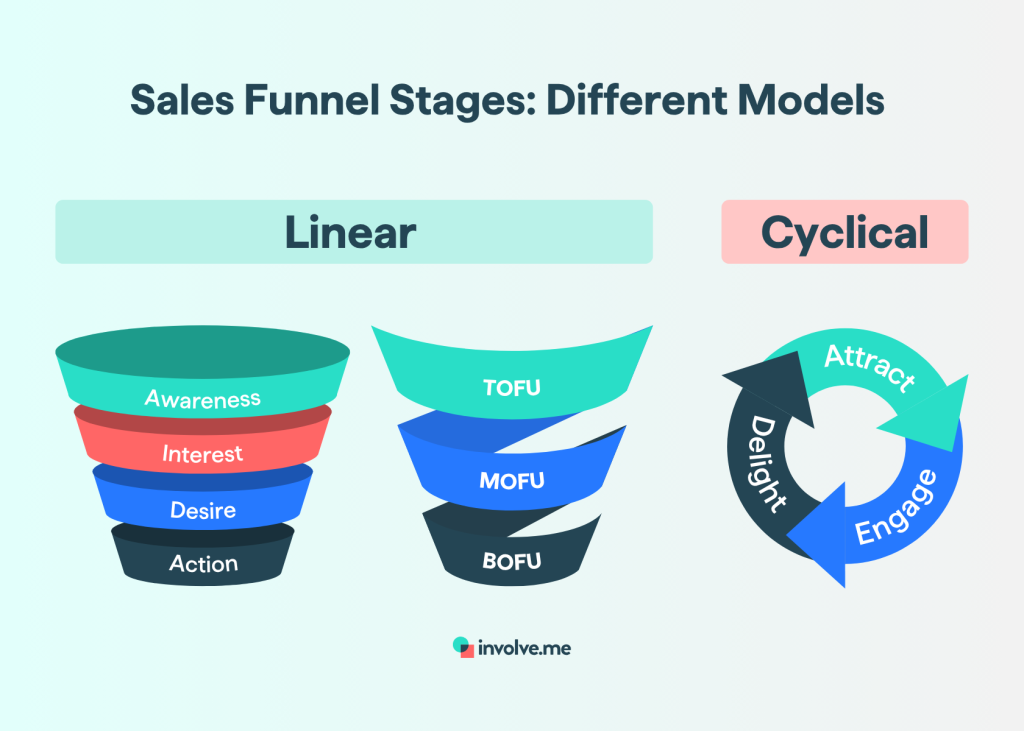
The Classic Funnel (AIDA)
This is the OG model. AIDA stands for:
Awareness: your lead discovers your brand or product
Interest: they want to learn more
Desire: they start wanting what you offer
Action: they buy
Simple, clear, and still widely used, especially in B2C.
But here’s the catch: The traditional sales funnel stages of that model end at the purchase. There’s no room for retention, loyalty, or referrals. And in today’s world, that’s a problem. For many businesses, most of the value happens after the first sale.
Even so, AIDA is a helpful foundation. It’s also the origin of terms like TOFU, MOFU, and BOFU (Top, Middle, and Bottom of Funnel), which we’ll break down next.
TOFU, MOFU, BOFU
This is more of a practical way to group your funnel stages based on how ready someone is to buy:
TOFU (Top of Funnel): They’re just discovering the problem. You offer educational content, guides, and tools to build awareness.
MOFU (Middle of Funnel): They’re exploring solutions. Now you share webinars, case studies, and comparison content to build trust.
BOFU (Bottom of Funnel): They’re almost ready, it's decision time. Leverage trials, demos, pricing pages, and one-on-one sales calls.
This approach helps you match your content and calls to action with buyer intent. It also works really well in content marketing. For example:
A TOFU blog post might offer a free eBook
A MOFU landing page might promote a webinar
A BOFU email might invite them to book a call or start a trial
In short, this model helps you keep your content aligned with where the buyer actually is in their journey.
The Flywheel (Attract, Engage, Delight)
HubSpot made this one popular, and for good reason.
Instead of treating the customer like the endpoint of a funnel, the flywheel puts them at the center of everything.
Attract: get their attention with useful content and outreach
Engage: build trust through conversations and value
Delight: support them after the sale so they stay, upgrade, and refer others
Why it matters: in SaaS (and other recurring revenue models), growth doesn’t stop at the sale. Happy customers feed back into the top of your funnel through referrals and word-of-mouth, paving the way for future sales. That creates momentum.
In a traditional funnel, customers fall out at the bottom. In the flywheel, they stay in the loop and spin it faster.
It’s a better reflection of how modern businesses grow.
Specialized Funnels
Different industries and business models tweak the funnel to fit their world. Here are a few examples:
E-commerce Funnels: Think micro-conversions. Stages like:
View Product
Add to Cart
Start Checkout
Complete Purchase
Each step can leak. That’s why e-commerce teams obsess over metrics like cart abandonment and product page conversion. Fixing friction at any point, like speeding up the checkout or adding trust badges, can have a big impact.
B2B Funnels: Longer. Slower. More complex.
A typical B2B funnel might look like this:
Lead
Marketing Qualified Lead (MQL)
Sales Qualified Lead (SQL)
Opportunity
Closed/Won Deal
There are often multiple stakeholders involved, and the process can take months. Plus, it’s rarely a straight line. B2B buyers bounce around, reading reviews, asking for internal approval, and jumping back to research.
That’s why B2B funnels rely so much on nurturing and personalization. And post-sale retention matters even more, since losing one customer can mean losing a five- or six-figure contract.
B2C Funnels: Faster, but wider. You’re often dealing with high volume and low friction.
Some B2C purchases (like e-commerce) happen in one session. Others, like buying a car or a financial service, still need multiple touches.
The difference between B2C and B2B sales funnels? It's often about scale vs. depth.
B2C focuses on speed and simplicity
B2B leans into depth and trust-building
Pipelines Vs. Funnels
You might hear the term sales pipeline too. Here’s the distinction:
A sales pipeline tracks what your team is doing: reaching out, booking demos, sending quotes
A sales funnel tracks what the buyer is doing: discovering, researching, deciding
They’re related, often visualized together, but they are not the same. Pipelines focus on actions. Funnels focus on conversion rates.
More on that topic? We have a full article comparing sales pipelines and sales funnels.
So... Which Model Should You Use?
There’s no one-size-fits-all. Most SaaS companies actually blend multiple models:
Marketing might use TOFU, MOFU, BOFU to plan content
Sales might manage a pipeline from SQL to Close
Customer Success might run a post-sale funnel focused on renewals or upsells
The key is clarity. Define your stages, align your teams, and tailor the journey to your target audience.
In the next section, we’ll show you how to build your own funnel from scratch (or fix the one you’ve already got).
Step-by-Step Guide to Building an Effective Sales Funnel
Let’s walk through how to actually create a sales funnel — one that’s tailored to your audience, easy to optimize, and ready to drive real revenue.
Whether you’re starting from zero or improving what you already have, follow these five steps.

1. Define Your Ideal Customer Profile (ICP)
Before you try to fill the funnel, figure out who should be in it. Identify your target audience and buyer personas in detail. This includes demographics, firmographics (for B2B), and psychographics.
Ask yourself:
Who’s a great fit for your product?
What kind of customers get the most value and stick around?
Who should you not be targeting?
Look at your existing customers. Find patterns such as job titles, industries, company size, and behavior. Use real data.
Create detailed personas that outline the challenges and desires of your prospects. Talk to your sales reps. Dig into support tickets and onboarding notes. The goal is to understand pain points, motivations, and decision-making patterns.
Once you’ve nailed your ICP, everything else gets easier. Your content becomes sharper. Your ads perform better. Your sales team spends time on the right prospects.
Tip: Use audience segmentation if needed. For example, maybe you sell to both HR managers and CFOs, but their priorities and buying journeys are different. Build funnel paths that speak directly to each group.
By defining your ICP clearly, you set the foundation for a high-converting funnel.
This step is all about quality over quantity. A smaller funnel filled with the right people will outperform a huge funnel full of bad-fit leads every time.
2. Capture Attention and Generate Leads (Top of Funnel)
Now that you know who you’re after, it’s time to attract them.
This is your TOFU zone, all about awareness and lead generation. Focus on pulling in traffic and converting visitors into leads.
Here’s what works:
Content Marketing: Blog posts, videos, infographics, podcasts, and social content that solve your target audience’s problems. Make sure it’s optimized for search, as most funnels (still) start with Google.
Lead Magnets: Offer something valuable in exchange for contact info. Think checklists, templates, calculators, webinars, or a free trial. It has to feel worth the trade. Example: a “Sales Funnel Calculator” or “SaaS Funnel Template” works great if you're targeting growth teams.
Landing Pages: When running campaigns (whether it’s a Google ad, a LinkedIn post, or a link at the end of a blog post), direct traffic to a landing page. Keep it focused: one offer, one clear CTA leading the visitor to the next funnel stage. Use consistent messaging, solid design, and A/B test everything (headlines, buttons, images, even form length).
TOFU Channels: Drive awareness through channels like search engines (SEO, Google Ads), LinkedIn, YouTube, forums, and partner content. Meet your audience where they already hang out. If budget allows, paid ads can drive volume, just be sure you’re targeting based on your ICP.
The goal here isn’t to sell. It’s to start the relationship. Get them to raise their hand and say, “I’m interested.”
Make your call to action clear and relevant to the TOFU offer. Use phrases like:
“Download the free guide”
“Get the checklist”
“Start your free trial”
And remember, most people aren’t ready to buy at this stage. Just make it easy for them to take that first small step.
Some lead generation templates to get your started
3. Nurture Leads Through the Funnel (Middle of Funnel)
Now you’ve got leads. Congrats. Don’t ghost them.
MOFU is all about building trust. Most of your leads aren’t ready to buy... yet. Your job is to warm them up. Build relationships and guide them toward a purchasing decision.
Here’s how:
Email Drip Campaigns: Set up automated email sequences. Start with helpful content, then move into product-specific messages. Keep it personal, not spammy. Personalize by industry or behavior when possible. Marketing automation tools are invaluable for managing these drip campaigns at scale.
Content for Consideration Stage: Think deeper content, like case studies, product comparisons, webinars, and FAQs. Answer objections before they come up. Help them picture success with your product.
Retargeting Ads: Use retargeting to bring back people who visited your site but didn’t convert. Show them relevant offers or reminders. A little nudge can go a long way. In fact, retargeted visitors are 70% more likely to convert than new visitors (Source: Saleslion)
Lead Scoring & Personalized Follow-ups: Use behavior signals to track interest. If someone visits your pricing page twice, they’re probably ready for a conversation. Set up alerts or automation that notify your sales team.
Maintain Consistent Communication: The middle of the funnel is where you lose the most people. The fix? Stay helpful, stay consistent, and keep showing up with value.
By the end of the MOFU stage, your leads should be well-informed about their problem and aware of your solution’s value proposition. The nurturing should lead them to a point where they start considering a purchase or a trial.
4. Convert Leads Into Customers (Bottom of Funnel)
Now we’re at BOFU, the decision stage.
Your lead is considering options. Maybe they’re comparing vendors. Maybe they just need a little reassurance.
Your job is to close the gap between “I’m interested” and “Let’s do this.”
Key tactics:
Free Trials and Demo. Equip your sales team (or self-serve channels) with the right materials to close the deal. This includes free trials and demos: Let them try before they buy. Make sure onboarding is smooth. A great trial experience can close the deal faster than any sales pitch.
Clear Pricing and CTAs: Don’t make people guess. Your pricing page should be easy to understand and link to the next step (trial, book a call, or buy now).
Trust Signals and Social Proof: At the bottom of the funnel, trust is the currency. Testimonials, reviews, case studies, client logos… this is the time to show proof. Social proof builds confidence.
Personal Outreach: For higher-value deals, reach out directly. Tailor the message. Reference what they’ve looked at. Offer help, not pressure.
Remove Friction: Don’t ask for a credit card if you don’t need it. Don’t make people wait days for a demo slot. Every bit of friction costs you conversions.
Psychological Triggers: Things like urgency (“Limited spots left for our onboarding this month”), scarcity (“Only 2 consultancy slots remaining this week”), or special incentives (“Buy by Friday for a 10% discount” or extra onboarding support) can help motivate action. But use it with moderation. Don’t manipulate. Prospects can smell desperation.
Address Last-Minute Objections: Train your sales reps to proactively address common last hurdles (security concerns, integration questions, ROI justification for bosses, etc.). Use comparison sheets (you vs. competitors), security whitepapers, custom demos, FAQs, and personalized decks (especially for enterprise deals).
The bottom line here is simple: make it easy to say yes.
Convert leads with these templates
5. Optimize and Automate (Always Be Tweaking)
Building the funnel is just the beginning of sales funnel management. You’ve got to keep improving it.
Track Your Metrics: Make sure you have access to real-time sales data and analytics to track important sales metrics such as conversion rates, drop-offs, cost per lead, CAC and time to close (we’ll dive deeper into this later). For now, know this: if you don’t measure it, you can’t fix it.
Leverage AI-powered recommendations: Your sales funnels can generate a lot of raw data and shouldn’t have to analyse it all manually. AI can do the heavy lifting and generate reports with conclusions, insights, and recommendations in seconds.
A/B Test Everything: Try different headlines, CTAs, form layouts, subject lines. Small changes can drive big gains.
Automate Smartly: Use CRM and marketing tools to handle repetitive tasks — email follow-ups, lead scoring, meeting scheduling. Automation saves time and ensures nothing slips through the cracks.
Document your funnel: Sit down with your team. Look at what’s working, what’s not. Maybe webinars drive better leads than eBooks. Maybe trial users don’t convert because onboarding is weak. Find the gaps and fix them.
Scale What Works: And when something is working? Double down. Just don’t flood the top of your funnel until the middle and bottom are solid, or you’ll pour water into a leaky bucket.
Focus on CRO: What worked in 2023 might not cut it in 2025. Buyer behavior shifts. Your product changes. New competitors show up. If you treat your funnel like a one-time setup, you’ll fall behind. It’s about getting more from what you’ve already got. Even small improvements can add up fast. Let’s say you boost conversions at three stages by just 10 percent each. Suddenly, 100 leads that used to get you 10 customers might now give you 13. That’s a 33% without spending more on ads or leads.
Want a funnel that performs? Start with the right target audience, guide them with value, earn their trust, make buying easy, and keep improving it over time.
Up next, we’ll look at the most common funnel mistakes and how to avoid them.
Build your own sales funnel
No coding or design skills required
6 Common Sales Funnel Mistakes (and How to Fix Them)
Even with a solid strategy, most funnels have weak spots. Leaks, friction, missed follow-ups — they add up fast.
Here are the most common mistakes businesses make, plus how to avoid (or fix) them.
Mistake #1: No Clear Funnel Stages
If your team doesn’t agree on what each funnel stage means, things get messy fast.
Marketing might pass off a lead that Sales thinks isn’t ready. Or leads just sit in limbo because no one knows who owns them.
The fix: Define your funnel stages clearly. What qualifies someone as a Lead, MQL (Marketing Qualified Lead), SQL (Sales Qualified Lead), or Opportunity? Who’s responsible for moving them forward?
Write it all down. Train your team on it. Update your CRM so the stages match your definitions.
Surprisingly, over 60% of B2B marketers admit they haven’t even defined their funnel stages. (Source: Hubspot)
Don’t be part of that stat. Funnel clarity = better performance.
Mistake #2: Letting Leads Go Cold
You worked hard to get a lead, then you failed to nurture them properly. Ouch.
This happens more than you’d think. A lead downloads a resource or signs up for a trial... and never hears from you again.
The fix: Build a real lead nurturing system.
That means:
Automated email follow-ups
Retargeting ads for recent visitors
Personalized touches where it makes sense
Don’t just rely on email. Use chatbots, SMS, LinkedIn, phone calls... whatever fits your customer.
Use your CRM to track engagement and behavior, and use lead scoring to gauge when a lead is warm.
Lead nurturing doesn’t mean spamming. It means staying helpful and top-of-mind until they’re ready to move forward.
And here’s the stat to remember: 79% of marketing leads never convert, mostly because they’re ignored. (Source: Hubspot)
Mistake #3: Overcomplicating the Funnel
It’s easy to go overboard. Before you know it, you’ve got 12 micro-stages, 4 forms, 3 webinars, and a 10-step email flow, just to get someone to a demo.
Every extra step is another chance for someone to bail.
The fix: Simplify. Make progression easy.
Ask yourself: do we really need this step? What’s the absolute minimum needed to qualify and convert someone?
Combine redundant steps
Shorten forms (you can collect more info later)
Fast-track high-intent leads
If 50 percent of people abandon your multi-page checkout, maybe it’s time to test a one-pager. If a 15-field signup form scares people off, cut it in half.
Less friction = more conversions.
Mistake #4: Ignoring Data
Some teams build a funnel and hope for the best. Others collect data but never act on it.
Either way, you’re leaving money on the table.
The fix: Set up a dashboard and regular funnel reviews.
Track key metrics such as:
Conversion rates between stages
Drop-off points
Average time in stage
Cost per lead/customer
Use tools like Google Analytics, Hotjar, or your CRM to dig into user behavior (involve.me offers a built-in analytics dashboard, so you have no excuse).
Where are people bouncing? Where are they stalling?
For example, if your blog drives traffic but doesn’t convert, maybe your CTAs need work. If demo-to-close rates are dropping, maybe the pitch needs a refresh.
And don’t forget qualitative data. Talk to your sales reps. Ask customers what convinced them, or what almost made them leave.
This isn’t about chasing perfection. It’s about consistently making small, informed improvements.
Mistake #5: Teams Aren’t Aligned
Marketing is chasing MQL volume. Sales wants quality leads. Customer success is onboarding people who were promised the moon.
Without alignment, your funnel turns into a game of broken telephone.
The fix: Create cross-team visibility and accountability.
Agree on shared definitions and handoff points
Set SLAs for follow-ups (e.g., sales calls SQLs within 24 hours)
Meet regularly to review funnel performance and feedback
Make sure your metrics aren’t siloed. If Marketing’s only goal is lead volume, they’ll keep dumping low-fit leads into the funnel. Shared KPIs like revenue or overall funnel conversion force better collaboration.
The smoother your internal handoffs, the smoother the customer journey.
Mistake #6: Treating the Sale As the End of the Funnel
Too many funnels stop at “closed-won.” That’s a mistake.
Customers don’t just represent one transaction. They represent future revenue, referrals, case studies, and churn risk.
The fix: Extend your funnel beyond the sale, with post-purchase stages
Build post-sale sequences for:
Onboarding
Upsells
Renewals
Referrals
Customer marketing isn’t fluff. It’s fuel for the next round of growth.
Set up email flows, webinars, and exclusive content for existing customers. Track retention, expansion revenue, and churn just like any other funnel stage.
Keep adding value after the sale, and you’ll build a loyal base that keeps coming back — and brings others with them.
The Bottom Line
Most funnel problems are fixable. But only if you’re paying attention.
Start by:
Defining your funnel stages
Following up with every lead
Removing unnecessary steps
Making data part of your decision-making
Keeping your teams in sync
And continuing the journey after the sale
You don’t need a perfect funnel. You need a responsive one, something you’re constantly improving.
Up next, we’ll dig into the metrics that tell you how well your funnel is working and where the biggest opportunities lie.
How to Measure Sales Funnel Performance
If you don’t measure your funnel, you can’t improve it.
Tracking the right metrics helps you figure out what’s working, what’s broken, and what to do next. It also keeps your team aligned around what actually matters: results.
Let’s go through the key numbers you should be watching at each stage.
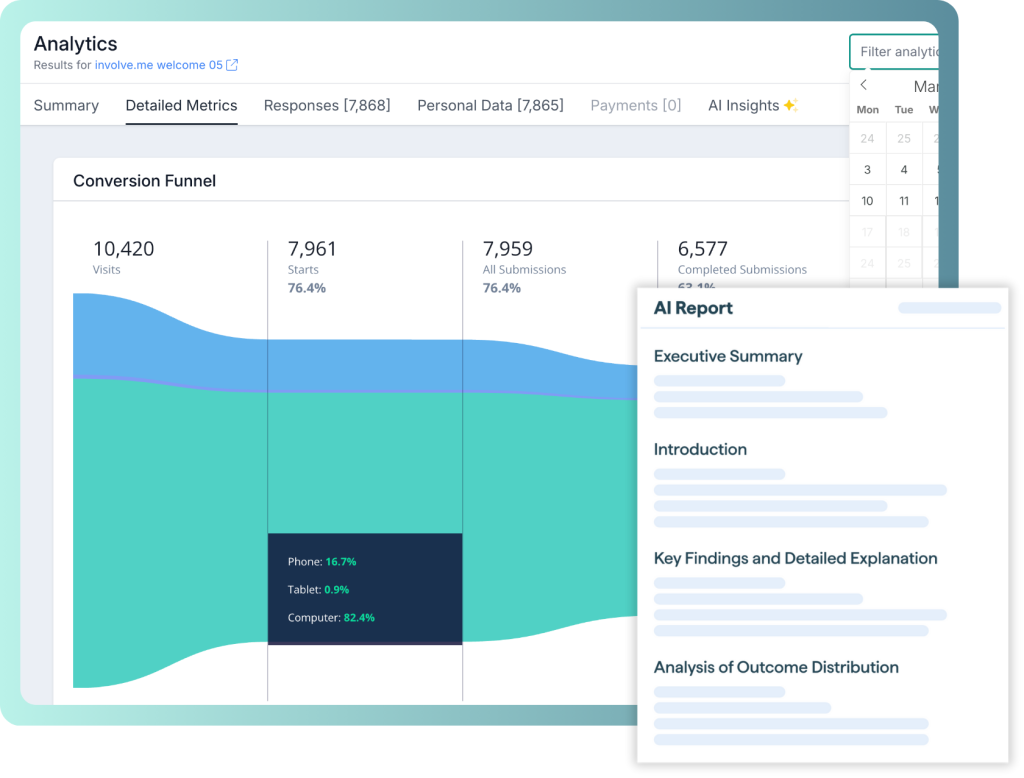
1. Conversion Rates (Stage by Stage)
This is your starting point.
Track how many leads make it from one stage to the next:
Visitors to Leads (opt-in rate)
Leads to MQLs
MQLs to SQLs
SQLs to Opportunities
Opportunities to Customers
Each of these steps gives you insight into where your funnel might be leaking.
Example: If 1,000 people visit your site, and 100 become leads (10 percent), but only 10 turn into customers, your overall conversion rate is 1 percent. That’s not bad, but maybe you’re losing a ton of people in the middle.
The fix starts with knowing where the drop-offs are.
Industry benchmarks vary widely, but for context: typical landing page conversion rates might be 5-7% (higher if highly targeted), lead-to-MQL perhaps 20-35%, MQL-to-SQL maybe 10-20%, SQL-to-Opportunity perhaps 50-60% (again, very dependent on industry), and Opportunity to Customer, 15-20%. The key is to establish your baseline and try to improve it.
2. Drop-Off Rates
This is the flip side of conversion.
Instead of asking, “How many people moved forward?” ask, “Where did people quit?”
Let’s say you send 100 people to your signup page, and only 30 complete the form. That’s a 70 percent drop-off. Something’s not clicking. Maybe the form is too long. Maybe the offer’s not strong enough.
Tools like Hotjar, FullStory, or your CRM’s funnel report can show you exactly where people are bailing. That’s your cue to test changes.
Aim to minimize drop-off at the stages under your control. Some drop-off is naturally expected, but you want it to happen earlier rather than later (so you don’t waste time on poor-fit leads).
3. Time in Stage and Sales Cycle Length
How long does it take for a lead to become a customer?
Speed matters. Shorter cycles mean faster revenue and less chance of leads going cold. Measure:
Time from Lead to MQL
Time from MQL to SQL
Time from SQL to Close
Track these over time.
If your sales cycle is shortening, that’s a good sign of funnel efficiency.
If your sales cycle is dragging, look at where things are stalling. Maybe follow-ups are slow. Maybe prospects are getting stuck waiting for more info.
Even small delays at one stage can slow down the whole system.
4. CAC and CPL (Customer Acquisition Cost & Cost Per Lead)
Your funnel isn’t just about conversion. It’s about cost-efficiency.
CAC is how much you spend to acquire a customer.
CPL is the cost to generate one lead.
Let’s say you spend $10,000 on ads and get 100 leads. That’s $100 per lead. If only 10 of them convert, your CAC is $1,000.
You want to compare CAC to LTV (lifetime value). Most businesses aim for an LTV:CAC ratio of 3:1, meaning for every $1 spent acquiring a customer, you earn $3 back over time.
If your CAC is too high, you either need to improve conversions or lower spend.
Look at Cost per Lead (CPL) or Cost per MQL to see which stage is most expensive. If one part of your funnel is very costly (e.g., driving top-of-funnel traffic via ads), you might need to either improve conversion beyond that to justify it or find cheaper channels.
Ultimately, funnel optimization isn’t just about converting more; it’s about doing so cost-effectively, thereby improving ROI.
5. Funnel Volume and Value
How many leads are sitting at each stage of your funnel right now? What’s the total value of those deals?
This is especially important for B2B and high-ticket offers. If you know your team closes 20 percent of SQLs, and you’ve got $100,000 worth of SQLs in the pipeline, you can project revenue.
Also, watch volume trends. If your top-of-funnel lead count is dropping, it might be time to invest more in traffic or TOFU content. If your bottom-of-funnel is stuck, maybe deals are getting stalled too long.
6. Overall Funnel Conversion Rate
This is the big-picture view.
Out of everyone who enters your funnel, how many become customers?
For example:
5 percent of webinar leads convert to paying customers within 3 months
2 percent of free trial users upgrade
1 percent of cold website visitors become buyers
This metric helps you gauge funnel efficiency. Improving it means more revenue without necessarily spending more.
Just make sure to track cohorts over time. Some leads convert in days, others in months, so cohort analysis can be helpful (e.g., of leads generated in Q1, what % have converted by Q3).
7. Retention and Churn (Post-Funnel Metrics)
If your business relies on subscriptions, you can’t stop measuring after the sale.
Track:
Retention rate
Churn rate
Expansion revenue (upsells, add-ons)
Referral rate
A leaky bottom means your funnel has to work twice as hard to keep growth steady.
High churn? Look into your onboarding, product fit, or customer success. Reducing churn can dramatically improve the lifetime value, which in turn allows a higher CAC.
Great retention? That gives you room to increase CAC or scale faster, because each customer is worth more.
8. Funnel Dashboards and Visuals
When reporting these metrics, don’t just bury this stuff in spreadsheets.
If your sales funnel platform doesn't offer analytics dashboards (involve.me does offer it, by the way), build a simple visual dashboard :
Show each stage
Include volume, conversion rate, drop-off
Highlight changes over time
This helps your team spot bottlenecks at a glance and keeps everyone focused on what matters.
Whether you’re presenting to leadership or running weekly growth standups, a visual funnel is your friend.
Put Metrics into Action
Your numbers aren’t just there for tracking. They should spark questions and drive experiments.
For example:
Low lead-to-MQL rate? Maybe your targeting is too broad.
Low trial-to-paid conversion? Maybe onboarding is weak or the trial isn’t showing value fast enough.
High CPL? Test cheaper channels or improve landing page conversion.
Pick one weak spot. Run a test. Measure again. Repeat.
The goal isn’t perfect metrics, it’s steady progress.
Up next, we’ll bring this all to life with real examples. Let’s break down some case studies of companies that improved their funnels and saw real results.
Real-World Case Studies
Let’s move from theory to reality. Here are two companies that put funnel strategies into action, and what happened when they did.
Case Study #1: How Audiense Fixed a Signup Drop in Just Hours
(Source: Hotjar)
The problem:
Audiense is a SaaS company that helps marketers tap into AI-powered audience insights. One day, they spotted something alarming: a sudden drop in signups. Big drop. No clear reason why.
And every minute they didn’t fix it, they were losing steam.
The fix:
So, they turned to Hotjar Session Recordings to watch how real people were interacting with their signup page.
What did they find?
The password validator's autocomplete was busted. Just... not working.
That tiny bug? It was stopping people from signing up. Once they spotted it, the team pushed a quick fix.
The result:
Signups bounced back. Fast.
What we can learn:
Watching real users helps you catch stuff analytics can’t.
That one recording saved them hours of guesswork. And it didn’t stop there. Audiense made Hotjar part of their regular process:
They review recordings after launching new features
They flag UX friction points early
They iterate daily
The payoff? Small, steady UX fixes that lift conversions by 10 to 20%, every time.
Bottom line: when you see users struggle, you remember: this isn’t about clicks or charts. It’s about helping real people do what they came to do.
Case Study #2: How One Tech Company Got 64% of SDR Time Back and Boosted Bookings by 28%
(Source: ScaleOps)
The problem:
A B2B tech company had a classic issue: Salesforce and Outreach weren’t talking to each other. SDRs were stuck toggling between tools, logging data manually, and wasting up to 64% of their time on tasks that didn’t move the needle.
Worse? Key outreach activity never made it into Salesforce. So pipeline visibility was fuzzy. Leads were falling through the cracks.
The fix:
Enter ScaleOps.
They sat down with SDRs, sales reps, and RevOps to map out the full sales process (pain points and all). Then they rolled out:
A bi-directional, automated sync between Outreach and Salesforce
Proper field mapping and smarter workflows
A move away from HubSpot marketing emails to SDR-sent Outreach sequences (so messages landed in inboxes, not the promo tab)
The result:
Manual work? Gone.
SDRs now spent more time in front of customers. Salesforce started showing real-time engagement data. And the kicker? Bookings from the first outreach email jumped by about 28%.
What we can learn:
If your tools aren’t integrated, your data’s probably a mess.
By syncing Outreach and Salesforce:
SDRs focused on selling, not copy-pasting
The team got clear visibility into the funnel
Personalized sequences felt real, even though they were automated
The takeaway: smart automation doesn’t just save time. It makes your outreach feel more human and drives better results.
7 Future Trends for Sales Funnels in 2025 & 2026
Funnels aren’t static. The way people buy is changing fast, and so are the tools and strategies that help you guide them.
Here are the key trends shaping sales funnels as we head into 2025.
1. AI and Predictive Analytics Become Standard
AI isn’t just hype anymore. It’s becoming part of daily operations.
Sales teams are using AI to:
Generate entire sales funnels from a prompt
Score leads based on behavior
Predict which prospects are likely to convert
Suggest next steps based on past data
Turn static landing pages into dynamic landing pages
Imagine a system that tells you, “This lead opened three emails, visited your pricing page twice, and watched a demo. Now’s the time to reach out.”
That’s not wishful thinking. That’s real, and it's already happening.
In fact, over 40 percent of businesses are using AI for lead scoring, chatbots, or analytics, and adoption is growing. If you’re not experimenting with it yet, now’s the time.
Generate a sales funnel with AI
Get started for free. Just enter your website URL below.
2. Chatbots and Conversational Marketing Go Mainstream
Buyers want fast answers, even after hours. Chatbots can give you that.
Modern bots:
Qualify leads on the spot
Answer FAQs
Guide users to the right resource or product
They don’t just sit on your homepage. You’ll see them on pricing pages, in-app onboarding flows, and even in email follow-ups.
And it’s not just about bots. Conversational marketing through channels like WhatsApp, Messenger, and SMS is picking up steam. People prefer messaging over forms.
Use bots and chat strategically to reduce friction. Just make sure the handoff to a human is possible and smooth when it matters. The best systems use chatbots to handle common queries and route hot leads to a live person quickly.
3. Personalization Gets Smarter (and More Expected)
By now, everyone personalizes emails with a first name. But in 2025, that’s the bare minimum.
We’re moving toward hyper-personalization:
Websites that change based on visitor behavior or industry
Email content tailored to what someone read or downloaded
Free trials that highlight the most relevant features for that user
AI-curated product recommendations, case studies, or testimonials
AI and CRM integrations make this scalable. And the payoff? More engagement, higher conversions, and a better user experience.
If you’re sending everyone the same follow-up email or showing the same homepage to every visitor, you’re behind.
You need Netflix-level personalization in your funnels.
4. First-Party Data Takes Center Stage
This is a big one. And it’s not optional.
With GDPR, CCPA, and the death of third-party cookies, marketers are being forced to change how they collect and use data. Privacy isn’t just a legal concern — it’s a strategic one.
The solution? Build and rely on first-party data. That means data you collect directly from your audience, with their full consent.
You’ll need to:
Grow your email list with content people want
Use lead capture forms, quizzes, surveys, and gated tools
Offer clear value in exchange for personal information
Be transparent about how you’ll use that data
And yes, this includes zero-party data too. This is information customers voluntarily provide, through quizzes or profile info for example, like their preferences, goals, or challenges.
Deloitte calls this a trust-based strategy. Customers are more willing to share their info when they know what they’re getting in return and trust how you’ll handle it.
In practice, expect to see:
Cookie-free tracking setups
Server-side data collection
Clear privacy notices and customization preferences
A bigger focus on owned audiences vs rented ad targeting
People still want relevant content; they just want transparency and control. Show them what you collect, how you’ll use it, and give them a reason to opt in.
In short, respect privacy, focus on data that customers share directly, and nurture those relationships. In return, you’ll build trust and get better data than any third-party list could offer.
5. Funnels Become Truly Omnichannel
Funnels used to be simple. A blog, a landing page, a form. Done.
Now? Buyers interact with your brand across a dozen touchpoints… sometimes in a single day.
They might:
Read a blog on mobile
Click a retargeting ad on Instagram
Watch a product tour on YouTube
Open your pricing email on desktop
DM your support team on LinkedIn
And then finally book a call from a chatbot
And they expect that experience to be seamless.
The best funnels in 2025 connect those dots. That means:
Your CRM knows what content someone’s seen
Your chatbot recognizes returning visitors
Your sales team knows what was discussed over chat or email
Messaging stays consistent across every channel
This is where Customer Data Platforms and CRM integrations come in. They help you build a unified view of the buyer, so every touchpoint feels connected, not scattered.
If your funnel still treats each channel as separate, you’re leaving friction in the journey.
6. Interactive and Multimedia Content Rises
The bar for content is getting higher.
Static PDFs and 2,000-word blog posts still have their place (I mean, look at this one…), but buyers want faster, more visual ways to engage.
That includes:
Interactive ROI calculators
Quizzes that diagnose a problem and suggest next steps
Guided product tours instead of long demo videos
Short-form video on TikTok, YouTube Shorts, or Reels
Dynamic whitepapers that behave more like microsites than downloads
These formats let people engage with your content instead of just consuming it passively. They’re also great for data collection. Each interaction gives you more insight into what someone cares about.
And this isn’t just for B2C. B2B buyers are busy too. They want bite-sized, on-demand, visual content that gets to the point quickly.
In 2025 and 2026, interactive and multimedia content isn’t just nice to have; it is expected.
Get started with dynamic and interactive funnels
7. Funnels Shift Toward Customer Experience
Here’s the bigger shift happening underneath all the trends: Funnels are becoming customer-first.
That means:
Helping buyers learn, not just pushing offers
Giving them control over how they move forward
Prioritizing long-term value over short-term wins
Making every touchpoint feel helpful, not transactional
Funnels used to be about moving leads through our process. Now, it’s about guiding them through their process — at their speed, through the channels they prefer.
This is where the flywheel model comes in. Instead of treating customers as the end of a journey, the flywheel puts them at the center. Happy customers generate referrals. Strong onboarding drives retention. Ongoing value drives expansion.
In short: good experiences lead to more growth. The companies winning in 2025 are the ones obsessing over customer experience, not just closing deals.
Final Thought on the Future
Funnels in 2025 are smarter, more conversational, more personalized, and more respectful of privacy than ever before. And this trend will only get bigger in 2026.
Companies that lean into these shifts, and stay focused on the customer journey, will build stronger, more scalable revenue engines.
What does it mean for you?
Your funnels should be:
Smarter, thanks to AI and data
Faster, with automation and chat
More personalized, based on behavior and needs
Privacy-first, built on trust
Fully connected, across multiple touchpoints
More visual, interactive, and useful
And deeply focused on helping, not just selling
If that sounds like a lot, here’s the good news: You don’t have to overhaul everything overnight. Start small.
Add a chatbot to your pricing page
Set up a retargeting ad for visitors who abandoned your signup form
Personalize your email nurture based on content downloads
Clean up your opt-in forms and explain why you’re collecting data
Coming up next: we’ll wrap up with a recap and some practical next steps you can take today.
Final Thoughts
If you’ve made it this far, here’s the main takeaway: Your sales funnel is one of your most important growth levers.
It’s how you guide potential customers from “just browsing” to “where do I sign?” It’s also how you retain and expand those customers after the sale. And when you commit to improving your funnel, even just a little bit at each stage, the results can stack up fast.
Small gains compound. A 10 percent improvement in three funnel stages doesn’t just mean 10 percent more customers. It could mean 30 to 40 percent more revenue from the same volume of leads.
If there’s one theme running through all of it, it’s this: Funnels are not static. They need regular attention. Regular testing. Regular updates.
The successful funnel you built last year may not work as well today, and definitely won’t be enough next year. Markets shift. Customer expectations change. New tools show up. You’ve got to adapt.
So here’s your next move.
If you’ve got a funnel but it’s underperforming, pick one part to fix. If you’re already seeing solid results, double down, test, refine, optimize.
If you don’t already have one, well… start building your funnel! With involve.me, it’s a matter of minutes, and you can start for free!
Build your own sales funnel
No coding or design skills required

